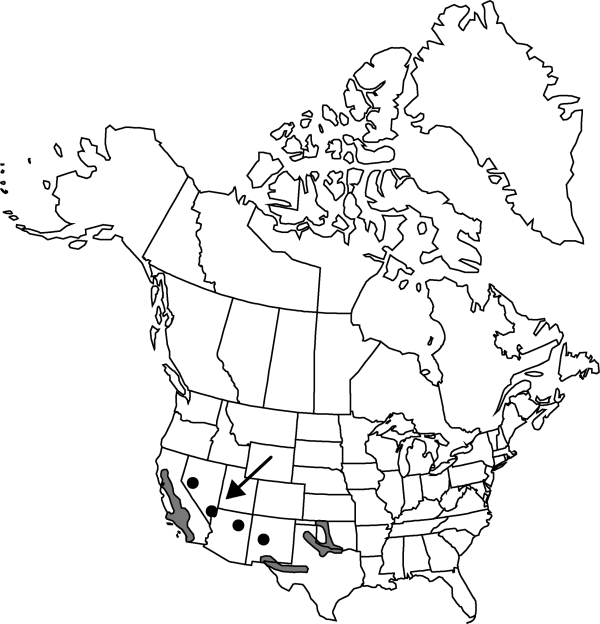Atriplex argentea var. mohavensis
Stems erect or decumbent, much branched, 3–12 (–20) dm, forming clumps 3–10 (–30) dm broad; branches obtusely to sharply angled, finely scurfy, white scurfy to glabrate. Leaves: petiole 2–21 mm on proximal leaves, distal ones sessile; blade 3-veined at base, ovate to lanceovate, or deltoid-ovate, (10–) 25–75 mm and often as broad, margin irregularly dentate or entire. Flowers of sexes intermixed in glomerules or staminate ones in distinct glomerules. Staminate flowers 5-merous. Pistillate flowers in axillary fascicles. Fruiting bracteoles sessile to subsessile, orbicular or cuneate-orbicular, mostly 3-veined, (3–) 4–7 × 2–4 mm, united to middle, margin sharply dentate, faces with a few irregular, green projections or crests, or unappendaged.
Phenology: Flowering summer–fall.
Habitat: Dry or saline substrates
Elevation: above 1000 m
Distribution

Ariz., Calif., N.Mex., Nev., Okla., Tex., Mexico
Discussion
Atriplex argentea var. mohavensis is a tall, bushy plant with tumbleweed proportions. Its morphologic differences, slight though they may be, are geographically based.
Selected References
None.
Lower Taxa
"/2" is not declared as a valid unit of measurement for this property."dm" is not declared as a valid unit of measurement for this property."dm" is not declared as a valid unit of measurement for this property.